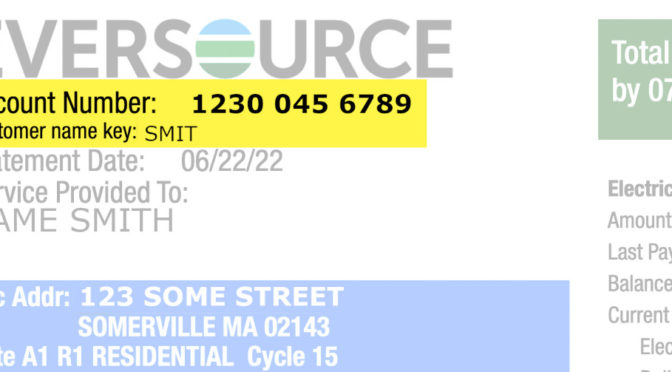Overview: We will switch electricity supplier (but not distributor) from Eversource to Somerville Community Choice Electricity.
- Step 1: Get Eversource account information View & Pay Bill | Eversource
- Step 2: Fill out a one-page online form https://cce.somervillema.gov/opt-up-or-join/
- Step 3: That’s it, done! Savings show up after next meter read.
Note: The supplier switching happens behind the scenes by Eversource. The distributor doesn’t change and there’s no modification to the hardware at all. So you don’t need landlord permission, it all happens with the click of a button.
Again, just fill out the one-page form here:
Took me 5 minutes total.
Appendix
Prices In more detail
Eversource bill puts us at $0.158/kWh, or 15c / kWh. Somerville Community Choice puts us at
- 13.2 c/kWh for 100% renewable !
- Or 10.2c /kWh for basic (50% required by MA)
- or 10.5c/kWh for 10% voluntary (60% total) more renewable.
So save money by switching to renewable energy. For 335 kWh the calculations:
- $52.93 original
- $34.17 SomervilleCCE
- $44.22 SomervilleCCE, 100% renewable.
FAQ: What are costs? Supplier vs Delivery
Basically, half our bill is from electric supplier, which we can change at will / any time / with no fees. The other half is from our electric deliverer, which remains unchanged.
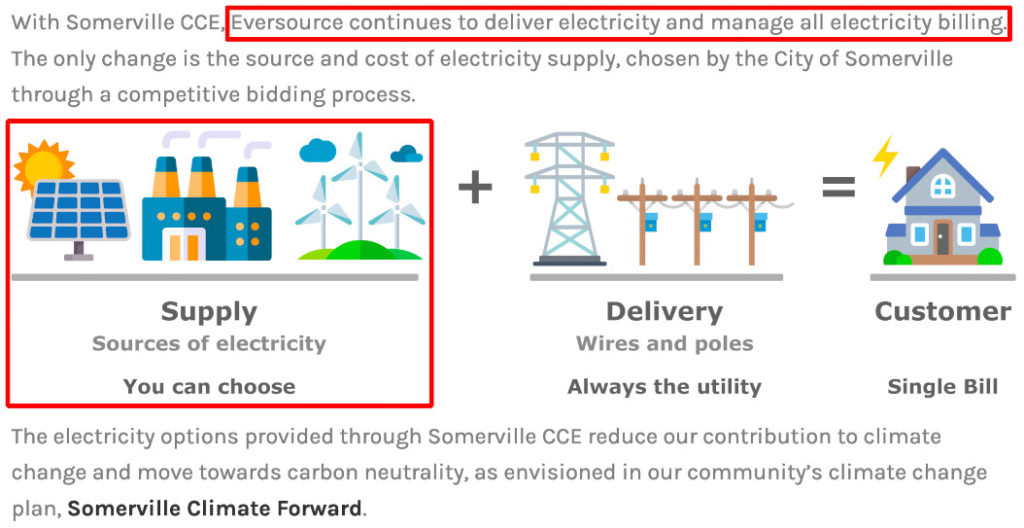
On the Eversource bill you can actually see this cost breakdown. Ours is about 50/50 supplier and delivery cost. This will change depending on how much electricity you use. The below example bill shows our rate as 15.8c/kWh.
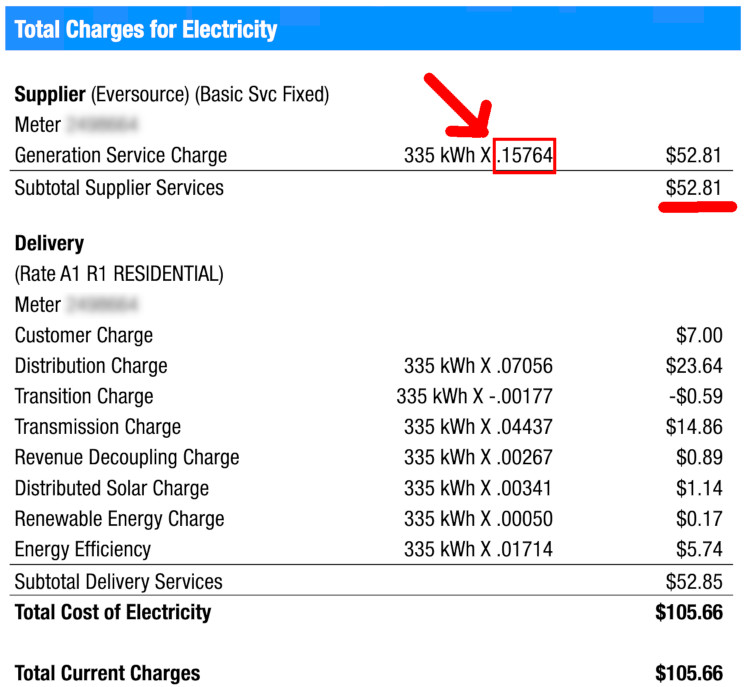
FAQ: Look up suppliers by zip code
Massachusetts.gov made a cool site to look up suppliers (energyswitchma.gov). Here you can see for zip code 02143 the available choices of supplier, as well as their price.
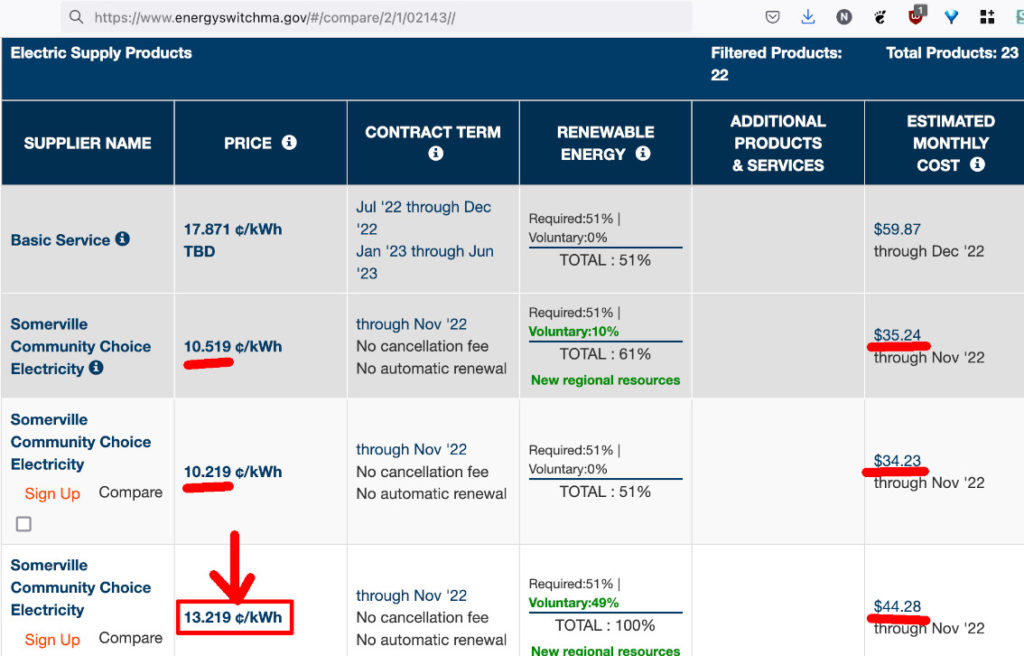
Step 1: Finding account information
It’s in the top right corner of your bill (probably on the second page).
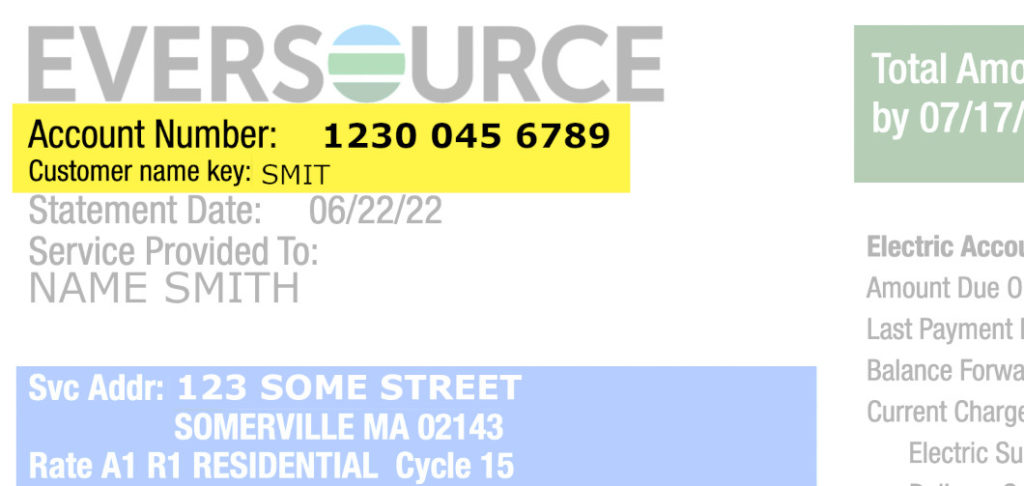
Step 2: Fill out One-Page Form
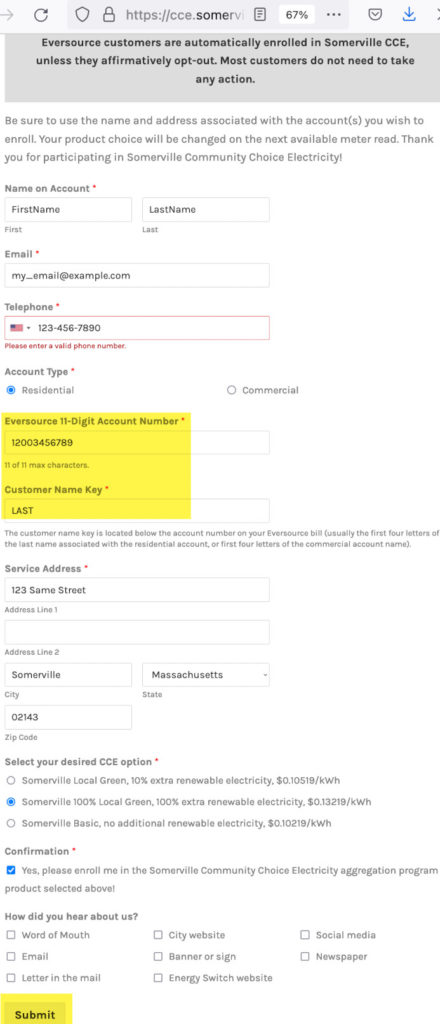
Step 3: Done!
Within a minute I got an email confirmation:
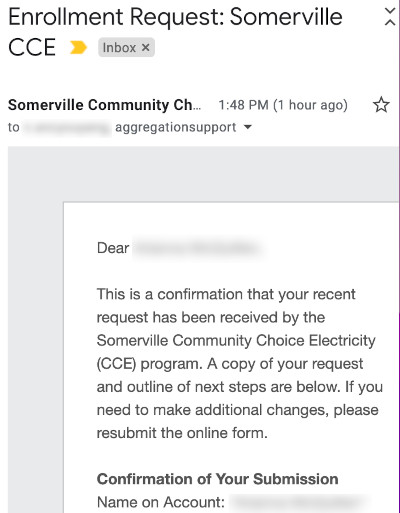
Enjoy the savings!
I’ll update this post in a month with our new energy bill. Let me know if you find this useful.
List of website URLs for more info
- The form https://cce.somervillema.gov/opt-up-or-join/
- Massachusetts Energy Rebates & Incentives | Mass.gov
On a total tangent, Meanwhile… Will this choice be taken away?
Per this article from PV magazine, there is a bill introduced that would remove this right to switch suppliers!
This is the section of the bill

Wait, why remove consumer choice??
The argument for removing choice is that 3rd party suppliers are going door-to-door and actually scamming people / raising people’s rates, predominately low-income people, vs if they stuck with default utility rate.
Massachusetts residents who get their power through competitive electric suppliers paid $426 million more over five years than they would have if they’d stayed with their utility companies, according to a new report from Attorney General Maura Healey.
The report, prepared by the Susan M. Baldwin Consulting firm, found that low-income residents are nearly twice as likely to sign up with competitive electric suppliers and are also charged higher rates than other customers.
https://www.wbur.org/news/2021/04/02/competitive-electric-suppliers-overpayment-healey-report-bills
My 2c
But on the other hand, Eversource only offers 51% renewable as mandated by state. Whereas there are tons of 100% renewable energy plans on Mass Switch.
In my opinion seems like the choice shouldn’t be taken away ! but rather that bad faith actors should be fined and regulated.
More information
https://news.google.com/search?q=Massachusetts+S2842&hl=en-US&gl=US&ceid=US:en
S.2842, includes a provision that would prevent retail suppliers from creating new contracts or renewing contracts after 2023. The provision comes without amendments from S.2150, a 2021 bill from state Sen. Brendan Crighton, D, that received support and testimony from Attorney General Maura Healey and then-state Energy and Environmental Affairs Secretary Kathleen Theoharides, among others
The overarching bill seems really cool. Here is it explained in plain english:
https://www.wbur.org/news/2022/04/08/massachusetts-2022-climate-bill-senate
Fulltext of relevant section of the bill = I’m confused
Full text: https://malegislature.gov/Bills/192/S2842.pdf
But, the text sounds like Somerville municipial energy would still be a choice?
SECTION 54. Notwithstanding any general or special law to the contrary, beginning on January 1, 2023, no supplier as defined in section 1 of chapter 164 of the General Laws shall execute a new contract or renew an existing contract for generation services with any individual residential retail customer. This section shall not apply to, or otherwise affect, any government body that aggregates the load of residential retail customers as part of a municipal aggregation energy plan pursuant to section 134 of chapter 164 of the General Laws. A violation of this section shall be an unfair and deceptive act pursuant to chapter 93A of the General Laws and the attorney general may bring an action under section 4 of said chapter 93A to enforce this section and to seek restitution, civil penalties, injunctive relief and any other relief awarded pursuant to said chapter 93A.
https://malegislature.gov/Bills/192/S2842, page 34
So, how to comment or ask questions?
Email Senate Committee on Ways and Means, perhaps.
https://malegislature.gov/Committees/Detail/S30/192/Cosponsor
Or call them!
- Michael J. Rodrigues
- Chair Michael.Rodrigues@masenate.gov (617) 722-1114
- Cindy F. Friedman
- Vice Chair Cindy.Friedman@masenate.gov (617) 722-1432
Or perhaps look at the sponsor of the original text, https://malegislature.gov/Bills/192/S2150 Sen. Brendan Crighton from Third Essex.
I think I (or my friends who vote in MA) will email and ask what this means for people in Somerville / on the Somerville Community Choice Electricity plan. And/or if there will continue to be 100% renewable options.
A funny 404 page


